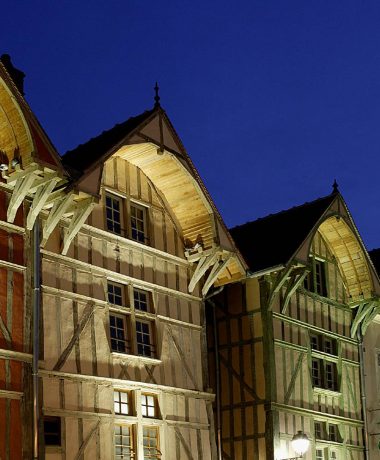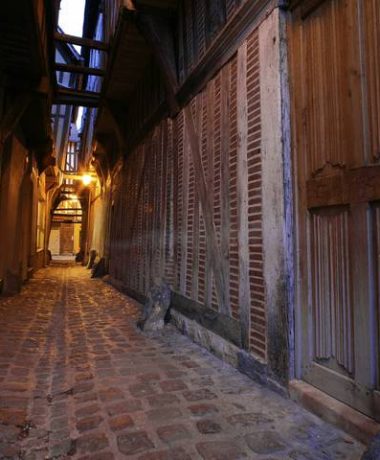(sólo en inglés)
For centuries, the city of Troyes has endured ravaging fires, such as the one in 1188 which destroyed the cathedral district as far as the doors of the fairs district.
But in Troyes, the locals will always remember the fire in 1524. It will remain in the history of the city and it is still referred to as the “Great Fire”!
The fire started on the evening of the 24th of May, 1524, around 11pm, in the house of an apothecary, at the corner of the streets “rue de l’épicerie” and “rue du Temple”, nowadays known as “rue Emile Zola” and “rue Saussier”. For 26 hours, flames have “swallowed” the city with no interruption until the night of Thursday 26th of May. A well-defined destructed area could be observed, a quarter of the city had been ravaged and a third of the population had been affected.
The districts of Croncels, St Jean and du Beffroy were devastated.
The churches of St Pantaleon and St Nicolas were destroyed, and the church of St Jean au Marché was half destroyed.
The Commanderie du Temple, the Hôtel de la Monnaie, the Château de la Vicomté, the gates of du Beffroy (writing of the time) and of Croncels were nothing but ashes and desolation.
The number of victims remains unknown, but the lucky ones who survived only had time to take their shirt with them before being housed in the cathedral district.
1,500 to 1,600 houses were destroyed, there were about 3,000 victims, the district of the Bourgeoisie was devastated, food reserves had disappeared… the situation was catastrophic.
No one will ever know the causes of the fire. Not surprisingly, people believed for years and until the end of the 16th century in the theory of a criminal fire, a conspiracy theory accusing soldiers to have forced children to set fire to the city.
Then, the locals rebuilt their homes in the following decades after this terrible disaster. They still made their houses with oak and cob, with a triangular roof, but they added a modern touch with sober Renaissance decorations on the ends of the beams, on the corner posts and at the base of the brackets. These houses were remodelled over the years, until 1667 when a royal decision was made to cover them with a lime plaster in protection against fire.
Finally, at the end of the 20th century, the houses were stripped of their greyish plaster. They were rediscovered, restored and pampered while preserved for the years ahead. It was a real metamorphosis, and they regained their colourful appearance.
This is how Troyes, the sleeping beauty, woke up to show the brightness of its thousand colours.
Head and featured photos ©Alexandra (Alexas_Fotos)


